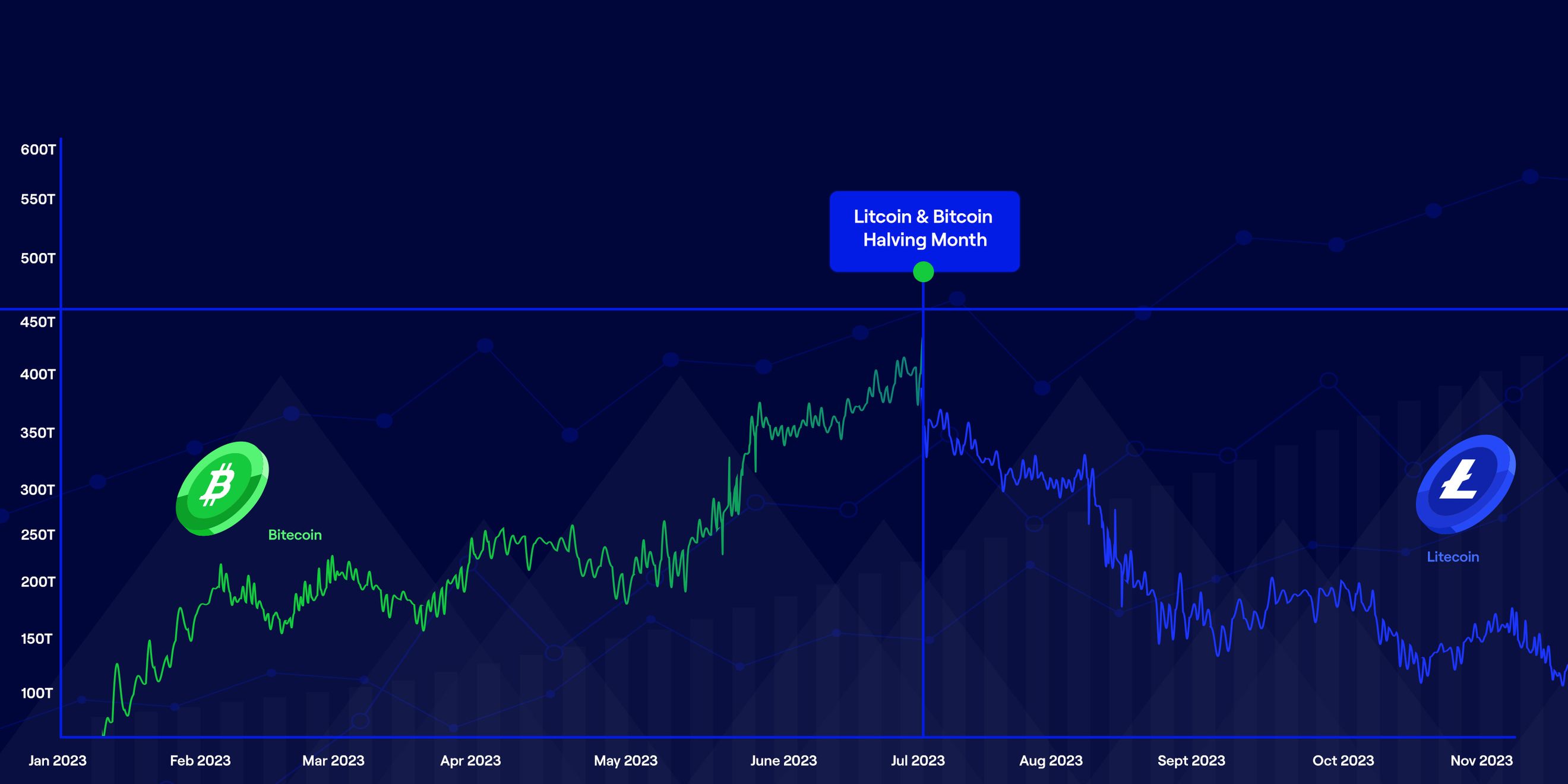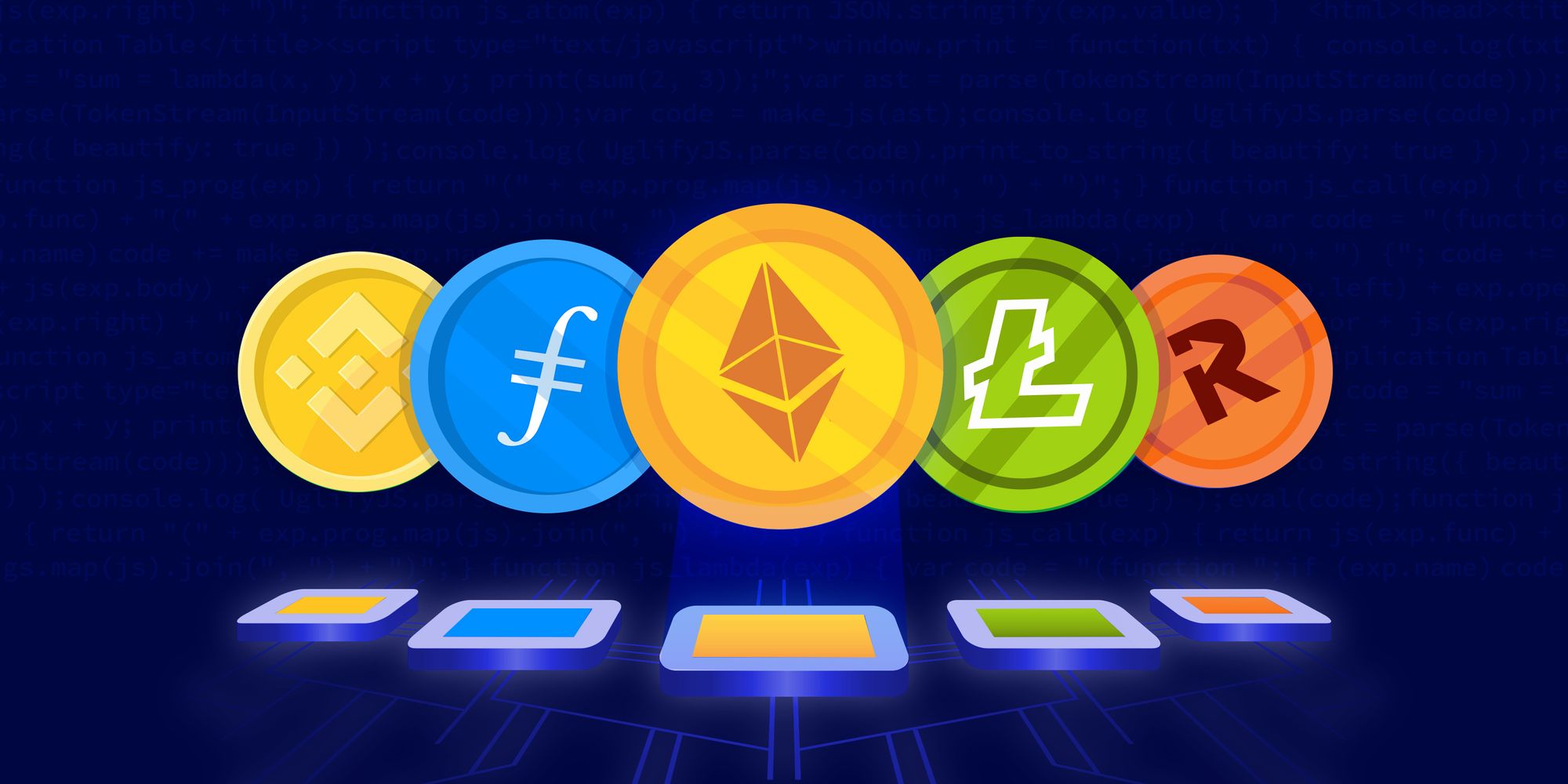
Litecoin Halving in 2023: The Future of LTC, Explained
Litecoin (LTC) - A crypto coin as old as Bitcoin(BTC) and has maintained its original network and protocol known as Halving. Litecoin is a blockchain and cryptocurrency created by Charlie Lee in 2011, and it has a maximum supply of 84 million coins. It was designed with the goal of enabling fast and secure transactions, boasting near-zero fees. 11 years after its inception, Litecoin claims it has recorded over 150 million transactions, making it the most active and reliable blockchain in the cryptocurrency world.
Halving in the world of cryptocurrencies pertains to a significant event involving the reduction of the block reward granted to miners for validating transactions on the blockchain. In essence, this process results in miners receiving only half the coins they previously obtained for each block they successfully mine. The primary purpose behind this mechanism is twofold: firstly, to regulate the inflation rate of the particular cryptocurrency and secondly, to introduce scarcity, which can potentially drive up its value over time.
By implementing the halving process, the rate at which new coins are brought into circulation is deliberately slowed down. Consequently, mining new coins becomes increasingly challenging and costly as the block reward diminishes. This, in turn, leads to a decreased supply of freshly minted coins entering the market. The concept of Halving holds tremendous significance in numerous prominent cryptocurrencies like Bitcoin, Litecoin, Bitcoin Cash, and Bitcoin SV.
What's Litecoin Halving?
The Litecoin halving event is an important event monitored by top Litecoin investors and those who want to jump in. During this event, Litecoin's block rewards are reduced by 50%. Block rewards are the benefits Litecoin miners get from keeping the blockchain running. I will explain this to put it into better perspective.
Blockchain miners play a vital role in validating transactions and forging new blocks. In the case of Litecoin, miners are rewarded for their efforts in creating new blocks on the blockchain through a combination of transaction fees and freshly minted LTC coins, a system known as a "block subsidy." When Litecoin was first launched in 2011, miners received a generous 50 LTC for each block they successfully produced.
Unlike the Bitcoin blockchain, which generates a new block approximately every 10 minutes, Litecoin boasts a faster block generation time of about 2.5 minutes, enabling it to produce blocks four times more swiftly. Furthermore, Litecoin sets a higher maximum cap on the total number of LTC coins to be minted compared to Bitcoin, capping it at 84 million (while Bitcoin's maximum is 21 million).
At periodic intervals, specifically every 840,000 blocks produced or 1% of the maximum coin count, Litecoin employs a mechanism called "Litecoin halving." This process involves cutting the block subsidy in half, an event that helps maintain the cryptocurrency's inflation-proof nature. By doing so, Litecoin creates scarcity, which drives up the asset's value due to its limited supply and growing demand. Additionally, the halving process effectively slows down the rate at which new coins are minted.
In essence, Litecoin halving serves the crucial purpose of safeguarding the cryptocurrency's value and ensuring its long-term sustainability as a digital asset.
When Is the Next Litecoin Halving?
The much-anticipated Litecoin halving is fast approaching on August 2 or 5, 2023. Last observed in 2019, the previous Halving led to a remarkable 300% surge in LTC price. During the 2021 bull run, LTC peaked at $410, granting early investors a staggering 1300% return. The halving mechanism, an essential aspect of Litecoin's design, helps maintain its stability and scarcity, enhancing its long-term value. As the countdown continues, the market buzzes with speculations about potential price movements, showcasing the enduring appeal of cryptocurrencies and blockchain technology's transformative potential.
Credit: Screenshot of the time for the Next Halving by the time of writing
History Of Litecoin Halving
Litecoin's halving events have occurred twice in its history. The genesis block was mined on October 7, 2011, yielding a reward of 50 LTC. Four years later, at block height 840,000, Litecoin experienced its first Halving, reducing the reward to 25 LTC. The second Halving took place at block height 1,680,000, further cutting the reward to 12.5 LTC. As the cryptocurrency world eagerly anticipates the next Halving, it is expected to happen around August 5, 2023, at block height 2,520,000, resulting in a halved reward of 6.25 LTC.
What Does LiteCoin Halving Mean for LTC Price?
Attempting to forecast the exact impact of the upcoming Litecoin halving on its price would inevitably delve into speculation. Nevertheless, we can draw insights from the past by examining how LTC prices responded during the previous two halving events. Analyzing historical price trends can provide valuable indications of how the market might react on this occasion.
Let's look at the market immediately after the 2019 halving at August and draw conclusions from it.
Credit: CoinMarketCap.
Analyzing the charts shows that Litecoin prices have historically demonstrated limited responsiveness to halving events. Surprisingly, significant price declines occurred in some instances before and after the Halving. As a result, predicting the precise outcome of the upcoming event remains challenging.
Nevertheless, certain crypto experts propose an intriguing perspective. They suggest that Litecoin tends to experience a price surge, often doubling in value just before a halving event. Subsequently, post-halving, there could be a remarkable upward trend, potentially leading to a surge of up to 300%. The reasoning behind this lies in the mechanics of Halving. As miners receive reduced rewards, the circulation of new coins slows down, creating a natural scarcity that can drive the price upward.
If you're keen on capitalizing on Litecoin's potential price surge following the Halving, the opportune time to acquire some Litecoin might be just before the event. Keeping a close eye on the live countdown, which can be monitored on platforms like Nicehash, may offer valuable insights into the timing of your investment. Already, Litecoin is showing bullish signs ahead of the Halving, boasting a notable 14% increase over the past week, adding to the anticipation surrounding its future performance.
Conclusion:
If you're interested in benefiting from Litecoin's potential price surge post-halving, consider purchasing some Litecoin right before the event. One reliable platform to facilitate your investment is Busha, a trusted crypto exchange company. By monitoring the live countdown on sites like Nicehash and leveraging Busha's user-friendly interface and secure infrastructure, you can make informed decisions about your Litecoin investment strategy.
Disclaimer: The information provided in this blogpost is for educational and informational purposes only and should not be considered as financial advice or investment recommendations. Cryptocurrency markets are highly volatile and speculative, and the price movements of cryptocurrencies, including Litecoin, can be unpredictable and subject to various factors, including market sentiment, regulatory developments, and macroeconomic trends.
Read Next:



